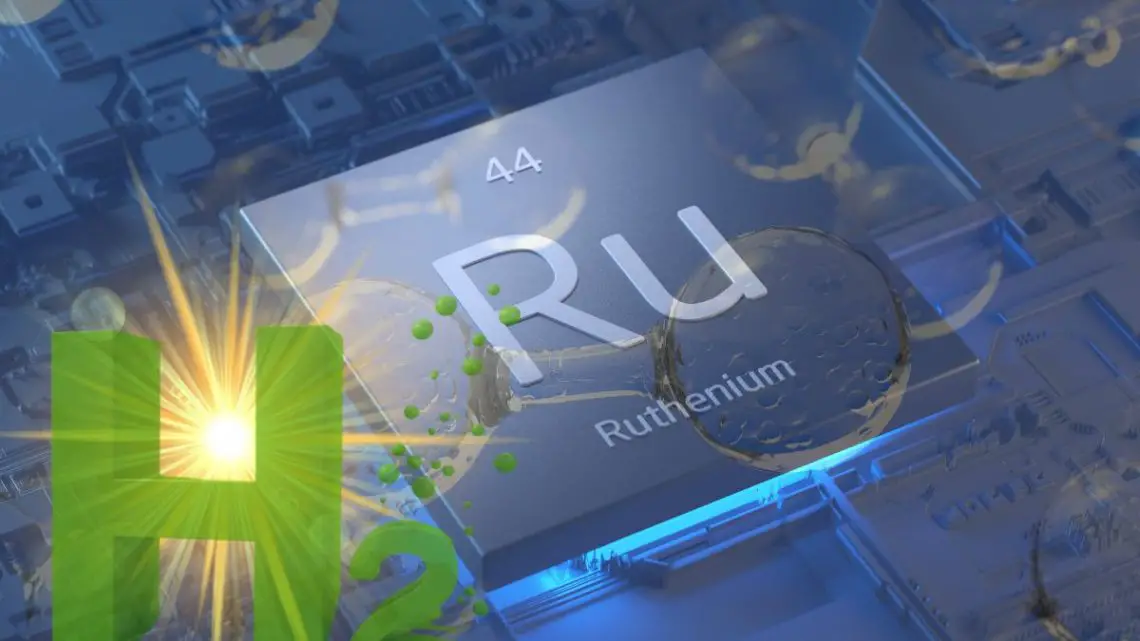
Producing green hydrogen efficiently and at low cost made possible with ruthenium
December 18, 2023Joint research team finds interesting green H2 production solution.
Istituto Italiano di Tecnologia (Italian Institute of Technology – IIT) and BeDimensional’s researchers have discovered that producing green hydrogen using nanoparticles of ruthenium lead to increased efficiency of the overall electrolyzer process and is far cheaper than using platinum.
Ruthenium is similar to platinum.
Ruthenium is a noble metal that is similar to platinum in terms of its chemical behavior. However, it is far cheaper than platinum, which is the catalyst that is commonly used for producing green hydrogen via electrolysis. Ruthenium is obtained in small quantities as a by-product of platinum extraction but at a lower cost ($18.5 per gram vs. $30 for platinum).
In their study, the researchers used a solar-powered system for water electrolysys and nanoparticles of ruthenium to serve as the active phase of the electrolyzer’s cathode, which resulted in an overall increased efficiency of the electoyzer.
The new tech uses only 40 mg of ruthenium per kilowatt. To put this into perspective, traditional proton-exchange membrane electrolyzers typically use up to 1 gram per kilowatt of platinum and between 1 and 2.5 grams per kilowatt of iridium (iridium prices are about $150 per gram).
“In our study, we have shown how it is possible to maximize the efficiency of a robust, well-developed technology despite an initial investment that is slightly greater than what would be needed for a standard electrolyzer,” said Yong Zuo and Michele Ferri from the Nanochemistry Group at IIT in Genoa, as reported in Tech Xplore. “This is because we are using a precious metal such as ruthenium.”
Producing green hydrogen at low cost on an industrial scale.
The system developed by the researchers is reportedly based on a new family of electrocatalysts that has the potential to lower the cost of producing green hydrogen on an industrial scale.

“Combining the data from our experiments with additional process parameters, we have carried out a techno-economic analysis that demonstrated the competitiveness of this technology when compared to state-of-the-art electrolyzers,” explained Sebastiano Bellani and Marilena Zappia from BeDimensional, who were involved in making the discovery.
Improving alkaline electrolyzers.
 The researchers at IIT and BeDimensional successfully improved the efficiency of alkaline electrolyzers by using ruthenium. The new family of ruthenium-based cathodes for alkaline elctrolyzers that has been developed are not only highly efficient, but also have a long operating life. These benefits give the cathodes the capability to lower the cost of producing green hydrogen.
The researchers at IIT and BeDimensional successfully improved the efficiency of alkaline electrolyzers by using ruthenium. The new family of ruthenium-based cathodes for alkaline elctrolyzers that has been developed are not only highly efficient, but also have a long operating life. These benefits give the cathodes the capability to lower the cost of producing green hydrogen.
The researchers findings were recently published in the journals Nature Communications and Journal of the American Chemical.
Ready to test your knowledge on the most abundant element in the universe? Take our fun and engaging Hydrogen Quiz now! [forminator_quiz id=”58712″]



 With over 15 years of reporting hydrogen news, we are your premier source for the latest updates and insights in hydrogen and renewable energy.
With over 15 years of reporting hydrogen news, we are your premier source for the latest updates and insights in hydrogen and renewable energy.